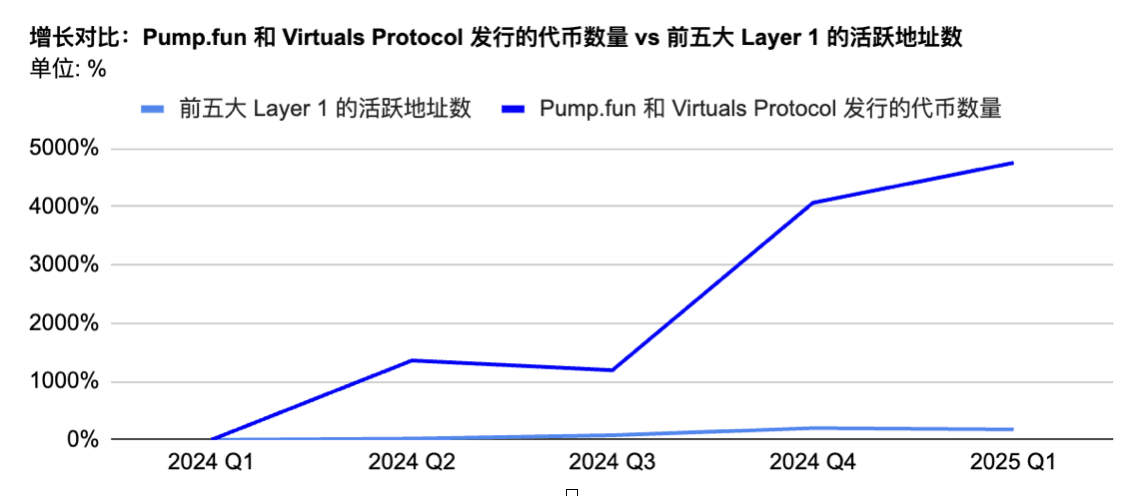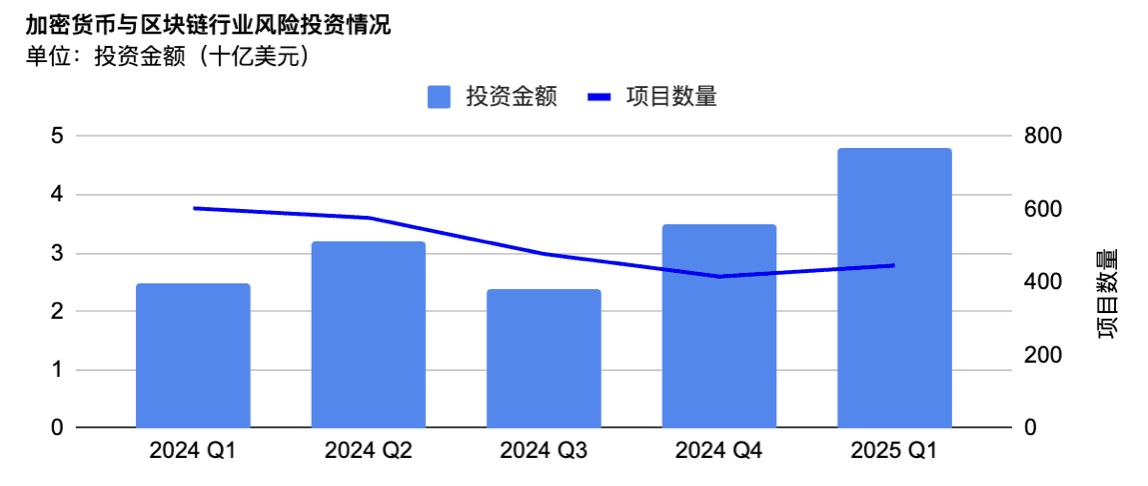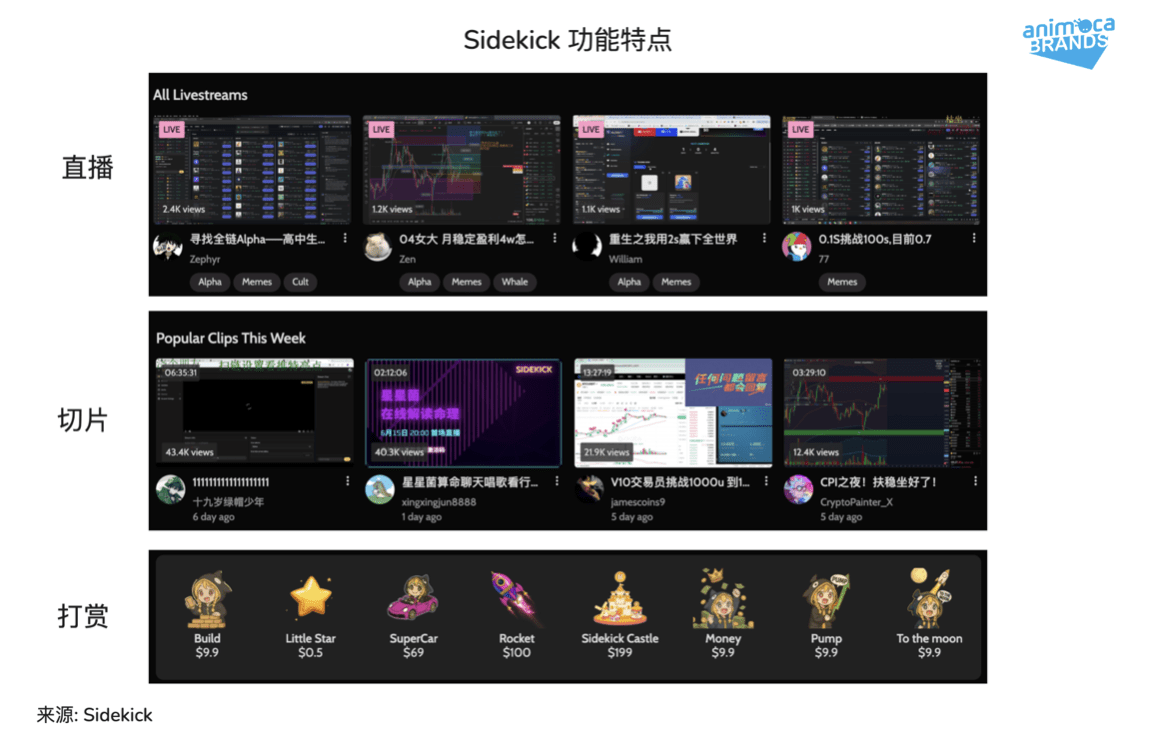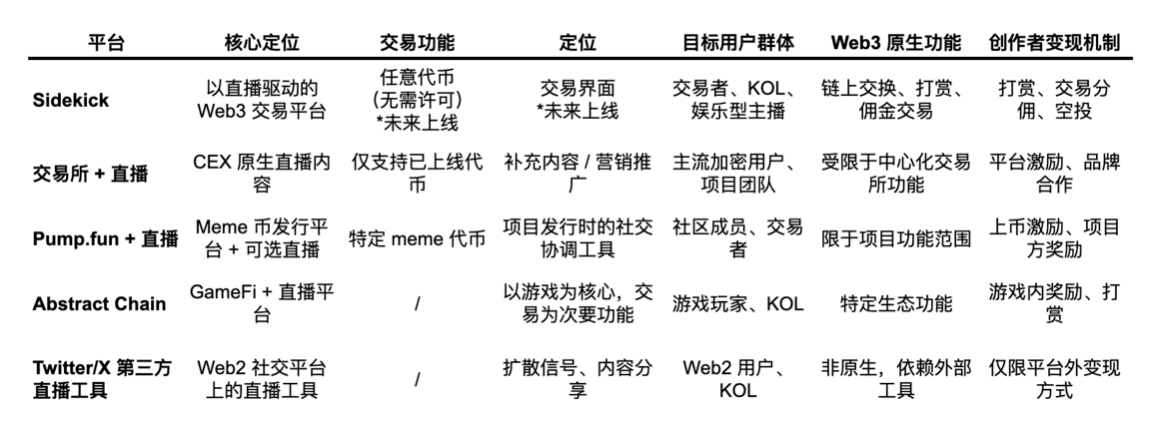Original source: Sidekick
TL; DR
Sidekick is a Web3 native live streaming platform that integrates TikTok-style content flow, Huya-style monetization mechanisms, and on-chain execution capabilities. During live streaming, users can tip and participate in airdrops, and content creators thus become distributors of real-time assets.
As the crypto attention market gradually becomes more competitive, the effectiveness of marketing tweets and leaderboard activities is diminishing. In contrast, live streaming is a more trustworthy and higher-conversion form of communication, suitable for establishing visibility and credibility for meme tokens and VC-backed projects.
This platform has already achieved initial results in the Asian market, attracting over 1,000 KOLs focused on the live streaming field. Sidekick currently plans to expand content areas and incentivize deeper community participation.
The team members mostly come from Web2, possessing rich experience in live streaming platforms and global market expansion capabilities. Sidekick entered the seventh season of the MVB Accelerator on the BNB Chain, receiving support from YZi Labs, Altos Ventures, Fenbushi Capital, and Hashkey Capital. They have also partnered with the Solana Foundation, Base, and OKX Wallet, and joined the Google Cloud Web3 Startup Program.
Looking ahead, Sidekick has the potential to evolve from a live streaming platform into a modular infrastructure layer, driving diverse on-chain activities through real-time content and becoming one of the core components of project operations.
Why live streaming is crucial in Web3 promotion
Sidekick is a Web3 content platform built around live streaming content, covering market commentary, blockchain games, and more. It applies the "live commerce" model to the crypto market, creating a LiveFi infrastructure that allows KOLs, traders, and project teams to interact in the same space.
The rise of Web3 live streaming is not accidental but reflects a structural problem within the crypto ecosystem: low marketing efficiency and an increasingly saturated attention market.

Starting from Q1 2024, with the emergence of tools and platforms like Pump.fun, BONK's LetsBonk, and Raydium Launchpad, the barriers to token issuance have significantly decreased. AI-driven smart tokens have further accelerated this trend. The number of tokens issued has increased more than 50 times compared to Q1 2024, and the number of active wallets on mainstream Layer1 has also doubled. However, the token exposure mechanism has not expanded correspondingly, making it difficult for early projects to gain attention.

At the institutional level, from Q1 2024 to Q1 2025, VC investment amounts continue to grow, but funds are increasingly concentrated in a few star projects. These projects, due to valuation and liquidity pressures, also demand higher market attention.
In this context, "distribution efficiency" and "information transmission" have become even more critical. Project teams need not only to create products but also to win the attention game. As Sidekick founder Jonny said, the criteria for evaluating current token projects have shifted from fundamentals to their ability to attract early attention.
Among all options, KOLs are the key force in driving project attention. Although marketing agencies can help find top KOLs, it is expensive and has limited coverage. New questions arise: how can project teams reach and activate mid-tier KOLs to improve the return on marketing investment?
Many InfoFi platforms are addressing this issue by introducing leaderboard-style airdrop mechanisms—projects allocate airdrops based on their popularity on Twitter/X. This indeed brings broader participation and incentivizes mid-tier KOLs to produce content. However, this mechanism also has side effects: KOLs tend to post homogenized, similar content, leading to content homogenization, user aesthetic fatigue, and impacting promotional effectiveness.
Thus, the problem evolves into: how can project teams, especially startups, stand out amidst the massive information flow, quickly establish trust, while continuously outputting differentiated content?
Live streaming demonstrates multiple structural advantages in the context of Web3 promotion. Compared to static tweets or pre-recorded videos, live streaming allows content creators and viewers to engage in real-time, unscripted interactions. This dynamic communication mechanism enhances transparency, allowing viewers to not only assess content but also observe the storyteller's actions, intentions, and credibility. These features are also among the reasons for the rise of live commerce in Web2. In 2023, China's live commerce GMV has surpassed 4.9 trillion yuan, and similar models are gradually becoming popular in European and American markets.
Web3 itself suffers from severe information asymmetry and high trust costs, so live streaming happens to be a means to reduce uncertainty and build trust.
The age structure of crypto users also supports the adoption of this form. About 60% of global crypto users are aged between 25 and 44, and this group also represents nearly 50% of Twitch's core users. This indicates that crypto users are highly compatible with live streaming in terms of culture and behavior.
The trend of industry adoption of this feature is unfolding: in 2024, Pump.fun integrated live streaming capabilities, allowing creators to introduce tokens in real time. The "Crypto" category on Twitch has also attracted over 4,600 daily viewers, comparable to mainstream categories like NBA 2K25 and Call of Duty.
In addition to structural advantages, the attention distribution path of live streaming also aligns with real user behavior. The Sidekick team has observed a typical five-step discovery path:
1. Someone shares token contract addresses in Telegram/Discord groups; 2. Discussed by private domain groups; 3. KOLs within the platform recommend to fans; 4. Gaining broader attention on platform X; 5. Ultimately converting to trading volume.
This indicates that the dissemination path of a project relies on trusted individuals to tell stories, validate legitimacy, and establish early trust. Live streaming, as a form of real-time human interaction, is the ideal tool to accelerate this process.
Sidekick: From Attention to Action
Sidekick is a crypto market discovery platform centered around live streaming, focusing on real-time market interpretation and project interaction. It responds to profound changes in Web3 user behavior: attention scarcity, rapid narrative shifts, and trust becoming key to user adoption of projects.
By deeply integrating live streaming with trading modules, Sidekick achieves real-time interaction between project teams, content creators, and viewers. It brings the logic of live commerce into the LiveFi scene, where narrative and community participation truly merge.
Platform characteristics

The "trust-action" closed loop built by Sidekick stems from product design: it absorbs the interactive mechanisms of Web2 platforms while possessing the transactional capabilities of Web3. It integrates the core functionalities of TikTok, Huya, and Bilibili:
Creators produce content in real time, and viewers can monetize it through tipping, gifting, advertising, or even subscriptions, creating a highly interactive and convertible content ecosystem.

Business model
Sidekick provides hosts with two main monetization methods: one is viewers tipping through virtual gifts; the other is a creator incentive program provided by the platform.
Ordinary users are another core role on the platform. They watch live streams, obtain market interpretations, participate in real-time comments, and can win rewards through airdrop activities within the platform.
The third component is the project team or advertisers. They enhance exposure and community engagement through formats like live AMA sessions, airdrop activities, or product placements, and can collaborate with hosts to create content, viewing hosts as performance-based promotional channels.
As an infrastructure and matching platform, Sidekick charges commission income from collaborating projects, similar to intermediary service fees.
Team introduction
Sidekick is led by founder Jonny, who has extensive experience in gaming, live streaming, and investment. His career started at China’s largest internet cafe brand Wangyu Internet Cafe, responsible for its European market expansion. He later founded the gaming companion platform Bixin, gaining deep insights into player behavior and the live streaming ecosystem.
Under Jonny's leadership, Sidekick was selected for the seventh season of the MVB Accelerator on the BNB Chain and received support from investment institutions such as YZi Labs, Altos Ventures, Fenbushi Capital, and Hashkey Capital. At the same time, Sidekick has partnered with the Solana Foundation, Base, and OKX Wallet, and successfully joined the Google Cloud Web3 Startup Program.
Market strategy
Sidekick's market expansion path is divided into three phases, corresponding to different user groups and content structures:
First phase: Targeting crypto-native users, especially those active in private domain groups within the Chinese community but less represented on public platforms like Twitter/X. This phase focuses on building a loyal user base.
Second phase: Expanding to general entertainment creators. These individuals may not be professional players but excel at enhancing the live streaming experience through humor, storylines, or emotional resonance, increasing user stickiness and platform retention.
Third phase: Entering more vertical content fields. Sidekick does not intend to compete head-on with giants like YouTube, Huya, and Douyu in gaming live streaming, as these platforms have significant advantages in IP licensing and e-sports resources. Instead, Sidekick chooses to enter the "real-time crypto market content" niche, forming a differentiated advantage and having greater flexibility to explore new content, new creators, and new monetization methods.
This three-phase path is community-driven. Many users proactively change their Sidekick-style avatars and spontaneously create tutorial content without direct incentives from the platform, resulting in a grassroots growth method that brings a strong sense of participation and a positive feedback loop of loyalty.
The team itself is also deeply active in the crypto community, regularly participating in meme coin trading, KOL group chats, continuously obtaining frontline feedback, and grasping the shifts in attention flow and narrative trends.
Competitive landscape
As the integration of live streaming and crypto market interpretation becomes increasingly close, various product paths in the so-called "LiveFi" track are emerging. These products can generally be divided into several categories: third-party live streaming platforms on Twitter/X, token issuance platforms with optional live streaming features (such as Pump.fun), game-integrated live models (such as Abstract Chain), and native live interfaces on exchanges (such as the product being developed by Binance).
These paths reflect different platforms' understanding of "what role live streaming plays in the crypto ecosystem":
Third-party tools on Twitter/X were the first to realize live streaming capabilities, but they lack Web3 native features such as tipping with cryptocurrency; Pump.fun's live streaming feature is positioned around how meme coins generate viral liquidity through live broadcasting. Live streaming is more of a complementary dissemination tool; Abstract Chain focuses on GameFi projects, mainly targeting creators and users in Europe and America.
From a foundational logic perspective, most platforms still view video content as a "promotional layer" or "additional feature." In contrast, Sidekick positions live streaming as the core interface for trading, not a supporting role but the main axis of the product. It integrates content creation, token trading, and community interaction, embedding native monetization tools such as tipping and airdrop incentives, allowing the behaviors of content creators and viewers to naturally revolve around on-chain interactions.
At the same time, exchanges like Binance are also deploying live streaming features, but these live streams only serve tokens that have already been launched. In contrast, Sidekick's creators can freely live stream around any asset—whether it's a newly launched product or a niche narrative token. This gives Sidekick a stronger trend adaptability, allowing it to more keenly capture community-driven fads and speculative cycles.
Recently, a typical case emerged: a host live-streamed the entire process of hyping a meme token and achieved community takeover (CTO) during the process. Viewers could not only see his actions in real time but also participate in discussions and interactions directly. This form of live streaming gives the content itself transparency and participability.
In terms of regional layout, Sidekick has established a solid foundation among Chinese creators and viewers, signing over 1,000 KOLs focused on the live streaming field. This dual advantage of "broad content supply + deep creator stickiness" will play a key role in the fiercely competitive attention battle.
Conclusion: The next step of LiveFi integration with protocols
As the market evolves, Sidekick is gradually transforming from a content platform into an infrastructure layer equipped with Web3 capabilities. It is not only an information dissemination tool but also a real-time discovery engine—tightly integrating content delivery with user actions. In this process, Sidekick is no longer just a "content layer," but an "execution layer" with conversion capabilities, able to turn viewing behaviors into on-chain operations.
In the future, Sidekick has the potential to expand into more on-chain scenarios, such as asset issuance, IDO bidding, whitelist subscriptions, and even lending. The platform will also continue to introduce modular components to serve more protocols and application projects.
Just as live streaming has completely changed the landscape of e-commerce, Sidekick also hopes to spark similarly profound changes in the Web3 ecosystem.
This article is from a submission and does not represent BlockBeats' views.




